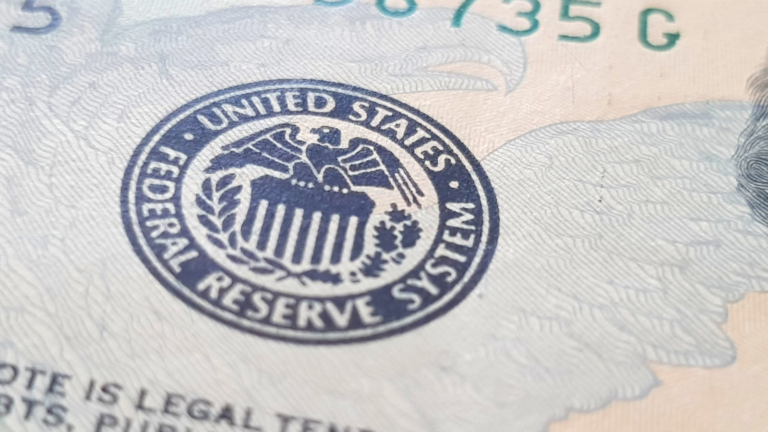Hello, Reader.
Thomas Yeung here with today’s Smart Money.
Over the past several months, you’ve heard us talk a great deal about the Road to AGI – the path to creating a hyperconscious artificial intelligence that could arrive in as soon as two to five years. The reality of AI with superhuman cognitive abilities (and good common sense) will make entire industries obsolete. Taxi drivers… lawyers… executives… no job is truly safe from AGI’s disruption.
That’s why Eric has been pounding the table on ways to prepare for this increasingly inevitable future.
However, the Road to AGI will feature bumps along the way. No technology ever progresses in a straight line. And often, macroeconomic cycles are to blame. Economic booms and busts have long disrupted everything from funding to consumer demand, creating headwinds (e.g., the 2008 financial crisis) and tailwinds (like the 2021 meme-stock bonanza) that can determine the fate of otherwise promising sectors.
That’s why I’d like to take a moment this week to focus on a rather non-AGI issue that’s now sending waves of panic through the AI world: the September Federal Reserve meeting.
I’ll also cover why this event has become overblown… and why we’re still excited for what we’re calling the third frontier of the computing revolution.
The Fed Meeting of the Decade
The September Fed meeting, which will happen on September 17 and 18, will likely mark the first interest rate cut in this economic cycle. And investors will be closely watching its size – a single 25 basis point cut versus a “jumbo” 50 basis point one or more – and use it to forecast the trajectory of future cuts.
It’s hard to overstate the impact this tiny difference will have. All firms are valued based on the net present value of their future cash flows (i.e., how much profits they will eventually earn), and higher interest rates make cash received today far more valuable than cash received tomorrow. (There’s some financial theory behind this that we’ll save for another day.)
What’s important is that AI startups with profits far out into the future (i.e., cash tomorrow) will see their values surge this September if the Fed does a jumbo rate cut. Markets will assume we’re on a path to 3% interest rates by mid-2025 and change their expectations accordingly. You can expect to see shares of AI moonshots, like AI-based weapons detection firm Evolv Technologies Holdings Inc. (EVLV), surge 10% or more for no other reason.
On the other hand, a single rate cut of 25 basis points will naturally do the opposite.
Stock Investors Are Betting on a Jumbo Cut…
Over the past month, stock investors have become convinced that a jumbo rate cut is on the way. Shares of the Global X Robotics and Artificial Intelligence ETF (BOTZ) are up 7.5% in the past month, and more speculative plays have risen even further. The overall S&P 500 index has seen its price-to-earnings (P/E) ratio rise two full standard deviations since April to 28.9X.
That tells us stock investors still believe that the weak employment numbers released last month will lead to a double rate cut. Share-price gains have outpaced earnings revisions in recent months, and that’s happening because stock investors are subconsciously reducing their implied discount rates to match a dovish narrative.
… But Bond Investors Are Skeptical
On the other hand, bond investors are far more muted in their assessment. Since the start of August, they have reduced their bets of a double rate cut from 85% to 44%.
The ADP jobs report released earlier today now cuts that probability even further to 37%. Though private-sector jobs increased by just 99,000 – well below economic forecasts of 145,000 jobs – wage gains by those employed rose more than anticipated. Those staying at their current jobs saw a median year-over-year wage increase of 4.8%, while those that changed jobs saw a 7.3% surge in income.
That means the Fed might not be in such a rush to cut rates. Inflationary expectations among employers are notoriously difficult to extinguish, and bond investors believe the Fed is willing to suffer short-term pain to get its inflation-fighting credibility back on track.
The Beneficiaries: Health and Tech
This “will-they-or-won’t-they” speculation over rate cuts will only deepen tomorrow when the federal Bureau of Labor Statistics (BLS) releases the “official” jobs report. We can expect to see the news media pour over every possible number and tear apart every market move.
Yet, the most important aspect of today’s economy is not the difference between a 25 and 50 basis point rate cut. In fact, no one will remember this figure by October!
Instead, it’s more important to view any September rate cut as the moment when the U.S. economy moves from an early-stage expansion into a mid-stage one. Inflation has been tamed, unemployment is steadying, and rate cuts are much like a fall equinox in marking the start of this new investment season.
Historically, two sectors are particular beneficiaries of mid-stage recoveries: tech and healthcare. These two industries feature firms with large upfront costs in research and development that eventually generate streams of low-cost income (think blockbuster drugs and chip factories). Lower interest rates benefit these companies by offering them lower borrowing costs.
The outperformance is particularly notable over long periods. One study by Fidelity found that the IT sector typically outperforms the market by a 15% annualized rate during mid-stage recoveries, and healthcare does 7% better. Rate cuts during these periods are beneficial, no matter how quickly they happen.
That’s why we’re so excited about some incredible firms combining both tech and healthcare into what we believe will become the third frontier of the computing revolution. Some of these are using AI to tap into the power of genomic data to develop new drugs. Others are even redefining what the $11.9 trillion global healthcare industry is all about.
Best of all, the Fed is telling us that now is the right time to jump in. We’re at the economic stage where the difference between a 25 basis point rate cut and a 50bps one is a red herring. So, if you don’t mind a little bit of short-term volatility, then long-term gains await.
Regards,
Thomas Yeung, CFA
Markets Analyst, InvestorPlace.com


